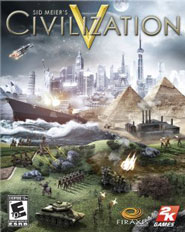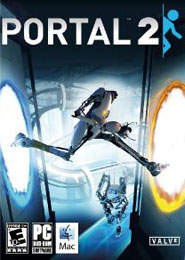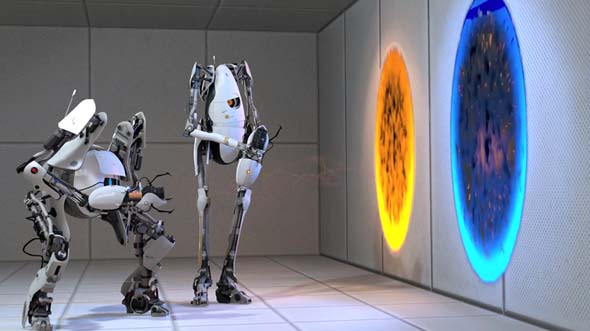This review was originally published 10/17/2010 on Game Observer (now defunct as of 05/13/2014). In anticipation of the soon-to-be-released Brave New World expansion pack, the review has been republished here for archival purposes.

For better or worse, I probably won’t be able to go back to Civilization IV after playing this.
I want to put my review into perspective before I begin. I’m not a day-one Civilization player. I didn’t start playing the franchise until Civilization III (after it had already been out for several years and both expansions had been released). Civilization IV, however, is probably my favorite video game ever -- or at least, my favorite PC game. The only games that I’ve probably logged more hours with than Civ IV are the Sims 2 (plus all the expansions) and the cumulative sum of all the Madden games I’ve played since 2000.
My hopes for Civilization V were sky-high from the moment the first details of gameplay were revealed about a year ago. This was despite my misgivings about the vendor and edition-exclusive gameplay content -- gameplay content should NEVER be exclusive to a vendor or edition of a game; anybody who buys a game should have the right to play any content that is released for the game (even if they have to pay extra for it) regardless of where they got it or when they bought! But now is not the place to discuss industry politics -- I’ll save that rant for another day.
Back on-topic: Civilization V promised a lot: competitive, tactical combat with a totally new rule-set; intelligent, interactive AI leaders; a simpler, streamlined interface; and simpler, more streamlined gameplay without sacrificing any of the series’ trademark depth. I’ve been spending almost every free moment playing this game for the two weeks since release. Does it measure up? [More]
bd00bba3-63d4-49ff-b2f5-7c1f81cd4df1|1|5.0
Tags:Civilization V, review, Sid Meier's Civilization, Civilization, Firaxis, 2K Games, PC, Steam, strategy, grand strategy, turn-based strategy, Civilization V, Civ-V
The scoring system that I've been using for video game reviews on this blog is a holdover from the reviews that I wrote for Game Observer (now defunct as of 5/13/2014). I'm not a big fan of using scoring systems for reviews, since reviews are inherently subjective, and it's very hard to quantify the quality of a creative work with any degree of precision. I can rate a game on technical levels, but that still doesn't tell whether a game is "good" or not. A game can be technically perfect, but not very "good"; alternatively, a game could be technically inferior, but is just more fun to play, and is thus "better". In fact, sometimes, my scores don't really match up with how I actually feel about the game because I include categories for technical executions of the game that may not have any real relevance with respect to whether I like a game.

Unfortunately, however, attention spans being what they are, a simple score does serve a function for some readers who are either unable to read the full text of my reviews, or who are unwilling to read the full text of my reviews.
You may have noticed that my scoring system changed slightly. I'm still going to reuse the basic scoring system in which I grade a game based on a set of five criteria and then average those criteria scores into a single overall score. However, I've changed the criteria slightly, and would like to spend a moment to define what these categories represent.
My reviews will now start using 4 pre-set criteria, and an additional "wildcard" criteria. [More]
44fffe34-4cbf-4e47-ac2d-6d2d6ded3b4b|3|3.7
Tags:review, score
This review was originally published 09/14/2010 on Game Observer (now defunct as of 05/13/2014). It has been republished here for archival purposes.

More than just a roster-update, but Gameflow is worthless and not worth the full price if you already own Madden 10.
It’s that time of year again. It’s time for the annual release of EA’s powerhouse licensed NFL game, Madden. This year’s release promises to completely redefine the way people play football games by bringing the playbooks of hundreds of plays down to one pre-selected play based on a Gameplan. It’s the way NFL coaches really do it, and once you stop and think about it, the idea really is brilliant. But a good game needs more than just good ideas. The ideas need to work. And Gameplanning just simply doesn’t.
I’ve always played the Madden games for the strategy and coaching elements. So when I first heard that the game would now be picking my plays for me, I was skeptical and afraid. But after hearing the arguments, and thinking about it a little bit, the change actually did make sense and even had me excited.
The Madden developers were claiming that gamers would be able to Gameplan for their upcoming opponent by setting up which plays to run in any given situation -- exactly how real NFL coaches do it. The system also had the potential to make full-length, 15-minute-quarter games more playable and practical, since the combination of the Accelerated Clock and GameFlow means that all the time spent between plays is now simulated. A default-length game of 7-minute quarters takes half an hour. And a full-length 15-minute-quarter game can be completed in less than an hour. An in-game save would have also helped make full-length games more practical for those of us who still may not have a full hour to devote for one continuous game. But too bad, we didn’t get that. [More]
1d426392-6b25-434a-ab2c-93ebdf227ad0|0|.0
Tags:Madden NFL 11, review, Madden NFL, NCAA Football 11, EA, EA Sports, Tiburon, sports, football, simulation, GameFlow, PC, PS2, PS3, Wii, PSP, XBox 360
This review was originally published 07/30/2010 on Game Observer (now defunct). It has been republished here for archival purposes.

The game has nice ideas and looks great, but new gameplay mechanics only seem to create more bugs and problems.
EA really needs some competition in the football gaming market. I can’t imagine any football gaming fan NOT wanting the NCAA to discontinue EA’s NCAA football-exclusivity license when it expires either this year or next. [Update: EA has agreed to not sign another exclusivity agreement!] Comptetition is always good for the consumer, and right now, EA really isn’t giving us games that are up to par with our expectations. For the past two or three years, EA has given us NCAA football games that have contained some great new features and gameplay additions, but every year, they manage to fill the game with new flaws or take steps backwards in terms of gameplay.
Two years ago, excessive turnovers made the game almost unplayable. Last year, the oppressively fast game speed made the game look and feel so chaotic, that it almost completely overshadowed the improvements such as the "Dead Duck" passes and the "Setup Play" feature. Like in past years, the new game gives us a lot of welcome improvements, but also introduces new problems and takes several steps backwards in certain areas. [More]
47bd3000-c4de-4098-aa1f-73ef3c994938|1|3.0
Tags:NCAA Football 11, review, NCAA Football, Madden NFL 11, Electronic Arts, EA, EA Sports, Tiburon, sports, football, PS3, PSN, XBox 360
This review was originally published 05/15/2011 on Game Observer (now defunct as of 05/13/2014). It has been republished here for archival purposes.

Yes GladOS, we brought you back to life because we really do love to test!
To be perfectly honest, I wasn’t looking forward to this game. I love the first Portal, as it was about as close to "perfect" as any game has ever come, but I couldn’t help but fear that Valve might turn this into a franchise, and in doing so, some of the allure of the game would be lost. But the game was released, and it is a triumph. Mostly.
Apparently, a very long time has passed since the first game. The Enrichment Center is very different. Under the care of the watchful AI, Wheatley, the entire facility has been slowly falling apart. The degrading, decrepit test chambers make for much more interesting visuals than the sterile, white and gray chambers of the first game. They are now overgrown with weeds and vines, panels are falling off the walls, broken glass litters the floors, and fallen and bent metal beams and girders obstruct some of your paths. It’s just too bad that with all the debris and vegetation littering the environment, that none of it is interactive. It slightly breaks the immersion when you walk through dangling leaves and they don’t react to your passing at all.
There is a lot of visual variety in this game. You travel through the dilapidated chambers of the early game until the facility begins to rebuild itself. You watch it piece itself back together. Then you get to travel through the deepest guts of Aperture Science. And finally, you come back to see the test chambers tear themselves apart again

The co-op puzzles are fun, but not terribly replayable. [More]
9e4a4a6b-d12e-4d91-8298-afef9867183b|2|3.0
Tags:Portal 2, review, Portal, Valve, Electronic Arts, EA, Steam, platformer, puzzle, shooter, PC, PS3, PSN, GladOS, hacking, cyber-attack, cloud save, XBox 360
|

| 12 | | | | | | | 60 | | 11 | | | | | | | 55 | | 10 | | | | | | | 50 | | 09 | | | | | | | 45 | | 08 | | | | | | | 40 | | 07 | | | | | | | 35 | | 06 | | | | | | | 30 | | 05 | | | | | | | 25 | | 04 | | | | | | | 20 | | 03 | | | | | | | 15 | | 02 | | | | | | | 10 | | 01 | | | | | | | 05 |
|